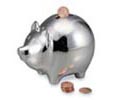The 7 Secrets To Getting and Staying Out Of Debt
By R. Sallay
As vice president of the American Credit Foundation, a nonprofit organization that helps individuals and families manage their debt, Mike Peterson knows firsthand how financial problems can wreak havoc in one’s life. Each day, counselors at the Midvale, Utah-based foundation help desperate clients dig themselves out from under piles of unpaid bills, stern notices from collection agencies and ominous foreclosure threats.
So, exactly what does it take to get—and stay—out of debt?
Here are 7 secrets that will help set you on the right path.
1. Cut Back on Credit Cards
Banks love to send offers for new credit cards to consumers, and mailboxes overflow with low-interest—even no-interest—“unbeatable deals.”
This doesn’t mean you should apply for them and risk running up large bills.
“Ideally, one should have no more than two or three credit cards,” Peterson says. “I would recommend a Visa or MasterCard, followed by an American Express card. Having two or three different cards will allow you more flexibility when utilizing credit, as some companies do not accept one or the other.”
2. Understand the Consequences of Breaking Rule #1
Even if you have excellent credit and zero debt, applying for too many credit cards can damage your credit rating.
“Generally, inquiries for new credit can affect your credit report for up to two years,” Peterson says. “Having too many credit cards—whether carrying balances or just high amounts of available credit—can negatively impact your credit score. Banks will look at your credit based on what you currently owe and also what ability you have to immediately incur additional debt.”
3. Stop the Spending
To minimize or avoid debt, monitor your monthly expenses—and halt spending when your budget starts to get tight.
“An additional reason to limit the number of credit cards you have is to prevent the possibility of not being able to keep track of all of the expenses you have incurred, which may make it difficult or impossible to pay them off each month,” Peterson says.
If you reach that point, he has one simple rule: “No more charging.”
“Commit now to discontinue the use of credit cards,” he says. “In fact, cut up the cards you have, call the companies, and close the accounts. If you must have a credit card for work, try a debit card. These are widely accepted, and the funds are pulled directly from your checking account.”
Don’t apply for another credit card until you can pay off all balances due and be 100% debt-free.
4. Pay More Than You Owe
Once you fully understand the monthly minimums you owe on each debt, add 5% or 10% to your total payment, if possible.
“The addition is not mandatory,” Peterson says, “but it will dramatically improve the success of your debt-reduction program.”
5. Stay the Course
Continue to pay 5% to 10% more on each debt until all debts are completely paid off. Even if your minimum payment requirements decrease as your debt diminishes, keep making the same payment, Peterson urges.
“And if one credit card is finally paid off, make the same total payment each month,” he says. “Just apply the extra funds to one of the other debts.”
6. Do the Math
Before you dig in your heels and say, “I just can’t do this,” it’s worthwhile to see how Peterson’s advice plays out in real dollars.
“If you owe $2,000 on a credit card with a 21% interest rate, and you make only the minimum payment each month, you will owe on this account for approximately 19 years—and pay a total of $6,725.64 in principal and interest,” he says. “The steps I’ve already discussed will help you pay off the debt in a fraction of the time. The emotional commitment to make this plan work may not be all that easy, but using this program—even without the additional 5% or 10%—will allow you to pay off the debt in about 8.5 years, and you will save approximately $2,387 in interest.”
7. Turn the Tables—and Start Earning Money
If you pay off your $2,000 debt in 8.5 years (versus 19 years of minimum payments), you will have 10.5 years to place that monthly minimum payment in an interest-bearing bank account, retirement account or other investment.
“Interest is a magical tool,” Peterson says. “Creditors use it to their advantage all the time. It can also work in your favor if properly implemented into the right program. If the steps mentioned above are taken, it won't be long before interest is working for you, instead of against you.”











0 Comments:
Post a Comment
<< Home